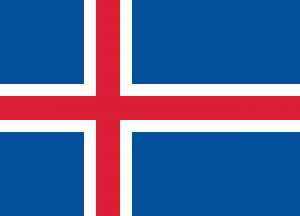Language/Icelandic/Grammar/Plurals
Hi Icelandic learners! 😊
In this lesson, we are going to learn about Icelandic plurals. Plural forms in Icelandic can be challenging, but with practice, you can master it.
Take some time to dive into these other pages after completing this lesson: Negation, Possession & Questions.
Basic rules[edit | edit source]
Icelandic plurals are formed in several ways, including adding -ar, -ir, -ur or -ðir to the base form. To determine which ending to use, you need to know the gender and declension class of the noun.
There are three grammatical genders in Icelandic: masculine, feminine and neuter. Each gender has its own ending:
- Masculine: -ar / -ir - Feminine: -ur / -ir - Neuter: -ð / -in / -ón
Additionally, there are five declension classes of nouns, each with its own characteristics.
Let's take a look at some examples:
| Icelandic | Pronunciation | English |
|---|---|---|
| bók (f) | [ˈpoːk] | book |
| bolur (m) | [ˈpɔlʏr] | cup |
| borð (n) | [ˈpɔrð] | table |
Now let's see how to make plurals:
| Icelandic | Pronunciation | English |
|---|---|---|
| bækur (f) | [ˈpʰaɪˌkʏr] | books |
| böðvar (m) | [ˈpœːðvar] | cups |
| borð (n) | [ˈpɔrð] | tables |
Note that in the feminine and masculine genders, the plural forms end in -ir. In neuter, the singular form often ends in -ð, -in, or -ón and the plural ends in -ðir.
Let's see another example:
| Icelandic | Pronunciation | English |
|---|---|---|
| hús (n) | [hʏːs] | house |
| hús (a) | [hʏːs] | houses |
In this case, both singular and plural form of the noun seems to be the same in the nominative case.
Plurals that change vowel[edit | edit source]
In some cases, the vowels of the singular form change in the plural form. Here are some examples:
| Icelandic | Pronunciation | English |
|---|---|---|
| maður (m) | [ˈmaːðʏr] | man |
| menn (m) | [mɛnː] | men |
| bóndi (m) | [ˈpoʊnˌtɪ] | farmer |
| bændur (m) | [ˈpʰanˌtʏr] | farmers |
Note how the u sound in the singular form changes to e in the plural.
Here's another example:
| Icelandic | Pronunciation | English |
|---|---|---|
| tólf (n) | [toulv] | twelve |
| tólfir | [ˈtoulvɪr] | twelve (plural) |
In this case, the vowel o in the singular form is changed to the sound o͡u in the plural.
Irregular plurals[edit | edit source]
Of course, there are also irregular plurals in Icelandic. These are plurals that don't follow the general rules. Here are some examples:
| Icelandic | Pronunciation | English |
|---|---|---|
| barn (n) | [ˈpartn] | child |
| börn | [ˈpœrtn] | children |
| fólk (n) | [foulk] | people |
| fólk | [ˈfoulk] | people |
As you can see, the plural form of the word barn (child), is börn and fólk (people) also remains the same in plural.
Dialogue[edit | edit source]
Here is a dialogue to illustrate the use of plural forms:
- Person 1: Ég hef bók. ([I have a book.])
- Person 2: Ég hef þrjár bækur. ([I have three books.])
- Person 1: Ég drekk kaffi. ([I drink coffee.])
- Person 2: Ég drekk aldrei kaffi en margar böðvar af te. ([I never drink coffee but many cups of tea.])
Culture[edit | edit source]
Icelandic is a unique language with a fascinating history. Icelandic has changed very little from Old Norse, so speakers of Icelandic can read the ancient sagas almost as easily as their modern works. The University of Iceland offers a summer course in Icelandic language and culture for those interested in learning more.
Practice[edit | edit source]
To improve your Icelandic Grammar, you can also use the Polyglot Club website. Find native speakers and ask them any questions!
Check out Icelandic Grammar on the Polyglot Club website for more information.
Sources[edit | edit source]
- Icelandic grammar - Wikipedia
- I-shift | Icelandic Grammar Reference
- Icelandic Nouns - ielanguages.com
Other Lessons[edit | edit source]
- Pronouns
- Nouns
- Adjectives
- How to Use Have
- Icelandic Articles
- Definite Article
- How to Use Be
- Articles
- Prepostitions

